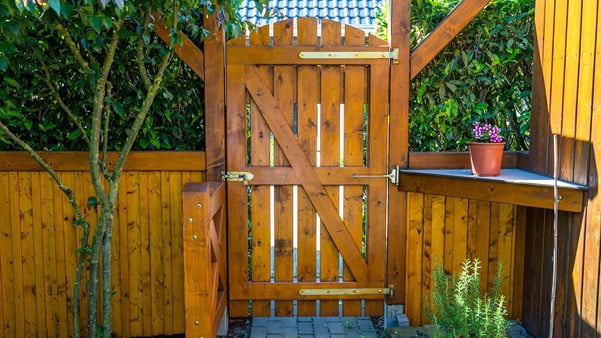The first thing you may observe about an old gate is slacking or sagging. If the wooden material of the gate is in perfect condition and the gate’s mechanism works well, then sagging is the only thing that will make the gate appear to be very old and weak.
Gate Sag is an awkward and unattractive issue for various householders. It can transform even the most welcoming, attractive front gate into something more in the guise of a Halloween abandoned house.
To prevent gate sagging, it is essential to understand why it takes place in the first place. Recently we also talked about how to fix a sagging gate so make sure to check it out.
Why Old Gates Sag Generally
In their simplest form, gates are naturally unbalanced structures. One end of the gate is fastened to a shaft, generally using three junctures, while the other is free to swing for closing and opening.
This signifies that the weight of the flexible end of the gate will always be pulled against its shafts or posts, junctures, bolts, etc. Primarily, there are a handful of reasons why a gate would sag like – The gate material is distorted, its junctures are not in their place, the gate lacks structural components, or its posts are no more parallel to each other.
There are several situations or cases where this effect would be overemphasized or exaggerated:
- Wooden gates sag more frequently than metallic gates, even though both can sag for several reasons.
- Gates composed of lower-quality wood will sag more easily after being exposed to humidity or moisture. The effect of moisture will propel the wood in poor shape, leading to the sagging of the gate.
- Shafts that are not sunk deep enough into the ground may ultimately succumb to the weight of the gate.
- Luckily, there are multiple methods to protect your gate against the probability of gate sagging problems, which we will discuss in the next section.
How to Prevent Gate from Sagging
There are some steps through which you can prevent gate sagging, which are described below:
- To prevent the front gate from sagging, you must first determine where the problem lies. Most of the time, either the wooden structure of the gate is sagging under its weight, or the shafts are no more parallel to each other.
- If the wooden frame sags, diagonal bracing can help the gate to prevent sagging. The simplest method to strengthen the front gate is to fasten a diagonal connecting rod that connects one of the junctures to the opposite corner. This balances the traction or tension between each side of the gate. But it will only be as strong as the primary joint itself. The tension rod operates equivalently to a diagonal wooden brace but is composed of cable and utilizes tension to bear the gates straight and avoids sagging.
- If the shafts or posts themselves are not parallel to each other, then you will require strengthening them. This could mean hollowing or digging them up, flowing concrete, and fastening them into a stronger, more stable foundation.
- If you are utilizing a bulky gate, you will require using strong shafts to sustain it in place. When the bolts or screws break off from the shafts, you may require interchanging it, too, as the wooden material of the gate ruptures and weakens under high pressure. Reinforcing the wooden material of the gate will defend the gate from sagging at some point in the future.
- Some gates can be managed by fastening the screws to the shafts, or you may need to re-drill the shaft to put the gate bolts in the other direction. Sometimes something as plain as putting a chunk of wood on the latching end of the gate can stop further sagging until you can control the shaft on which the gate hangs and swings.
- Your wooden gates could be sagging because the hinges themselves are broken from excessive usage. If exchanging the screws does not look to straighten the gates, perhaps the time has come to interchange the junctures themselves. You should go for more vigorous junctures that will last more than the previous ones and utilize durable and heavy-duty screws to keep them in their place.










Comments